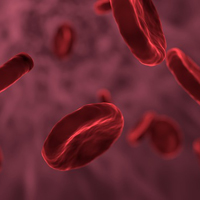Use of CytoSorb in the emergency department-high dependency unit: A case report and a mini review

Accepted: 23 September 2021
All claims expressed in this article are solely those of the authors and do not necessarily represent those of their affiliated organizations, or those of the publisher, the editors and the reviewers. Any product that may be evaluated in this article or claim that may be made by its manufacturer is not guaranteed or endorsed by the publisher.
Circulating inflammatory mediators and cytokines play a pivotal role in the progression of sepsis, leading in turn to septic shock, organ failure and resistance to standard therapy. Blood purification therapies may be adjuvant treatment for severe sepsis, but results have been shown to be so far controversial. Recently, CytoSorb has achieved promising outcomes on reduction of cytokine blood levels, improvement of clinical parameters and mortality in sepsis, as well as in other acute conditions. It is mostly used in Intensive Care Unit (ICU), in isolated hemoperfusion, or inserted in other circuits in addition to Continuous Renal Replacement Therapy (CRRT), heart-lung machines and extracorporeal membrane oxygenation. We report a case of septic shock occurred in our Emergency Department-High Dependency Unit (ED-HDU), resistant to standard therapy and improved after CytoSorb, so avoiding ICU hospitalization.
Ronco C, Kellum JA, Bellomo R, House AA. Potential interventions in sepsis-related acute kidney injury. Clin J Am Soc Nephrol 2008;3:531–44. DOI: https://doi.org/10.2215/CJN.03830907
Ankawi G, Neri M, Zhang J, et al. Extracorporeal techniques for the treatment of critically ill patients with sepsis beyond conventional blood purification therapy: the promises and the pitfalls. Crit Care 2018;22:262. DOI: https://doi.org/10.1186/s13054-018-2181-z
Forni LG, Ricci Z, Ronco C. Extracorporeal renal replacement therapies in the treatment of sepsis: where are we? Semin Nephrol 2015;35:55–63. DOI: https://doi.org/10.1016/j.semnephrol.2015.01.006
Girardot T, Schneider A, Rimmelé T. Blood purification techniques for sepsis and septic AKI. Semin Nephrol 2019;39:505–14. DOI: https://doi.org/10.1016/j.semnephrol.2019.06.010
Dutto L, Melchio R. Reviews from literature and web. Emerg Care J 2009;5:42. DOI: https://doi.org/10.4081/ecj.2009.6.42
RENAL Replacement Therapy Study Investigators, Bellomo R, Cass A, et al. Intensity of Continuous Renal-Replacement Therapy in Critically Ill Patients. N Engl J Med 2009;361:1627–38. DOI: https://doi.org/10.1056/NEJMoa0902413
Hetz H, Berger R, Recknagel P, Steltzer H. Septic shock secondary to β-hemolytic streptococcus-induced necrotizing fasciitis treated with a novel cytokine adsorption therapy. Int J Artif Organs 2014;37:422–6. DOI: https://doi.org/10.5301/ijao.5000315
Kogelmann K, Jarczak D, Scheller M, Drüner M. Hemoadsorption by CytoSorb in septic patients: a case series. Crit Care 2017;21:74. DOI: https://doi.org/10.1186/s13054-017-1662-9
Morris C, Gray L, Giovannelli M. Early report: The use of CytosorbTM haemabsorption column as an adjunct in managing severe sepsis: initial experiences, review and recommendations. J Intensive Care Soc 2015;16:257–64. DOI: https://doi.org/10.1177/1751143715574855
Kellum JA, Song M, Venkataraman R. Hemoadsorption removes tumor necrosis factor, interleukin-6, and interleukin-10, reduces nuclear factor-κB DNA binding, and improves short-term survival in lethal endotoxemia*. Crit Care Med 2004;32:801–5. DOI: https://doi.org/10.1097/01.CCM.0000114997.39857.69
Friesecke S, Träger K, Schittek GA, et al. International registry on the use of the CytoSorb® adsorber in ICU patients. Medizinische Klin - Intensivmed und Notfallmedizin 2019;114:699–707. DOI: https://doi.org/10.1007/s00063-017-0342-5
Mehta Y, Mehta C, Kumar A, et al. Experience with hemoadsorption (CytoSorb ® ) in the management of septic shock patients. World J Crit Care Med 2020;9:1–12. DOI: https://doi.org/10.5492/wjccm.v9.i1.1
Schädler D, Pausch C, Heise D, et al. The effect of a novel extracorporeal cytokine hemoadsorption device on IL-6 elimination in septic patients: A randomized controlled trial. Eller K, editor. PLoS One 2017;12:e0187015. DOI: https://doi.org/10.1371/journal.pone.0187015
Honore PM, Hoste E, Molnár Z, et al. Cytokine removal in human septic shock: Where are we and where are we going? Ann Intensive Care 2019;9:56. DOI: https://doi.org/10.1186/s13613-019-0530-y
Hawchar F, László I, Öveges N, et al. Extracorporeal cytokine adsorption in septic shock: A proof of concept randomized, controlled pilot study. J Crit Care 2019;49:172–8. DOI: https://doi.org/10.1016/j.jcrc.2018.11.003
Lippi G, Montagnana M, Balboni F, et al. Academy of Emergency Medicine and Care-Society of Clinical Biochemistry and Clinical Molecular Biology consensus recommendations for clinical use of sepsis biomarkers in the emergency department. Emerg Care J 2017;13:6877. DOI: https://doi.org/10.4081/ecj.2017.6877
Brouwer WP, Duran S, Kuijper M, Ince C. Hemoadsorption with CytoSorb shows a decreased observed versus expected 28-day all-cause mortality in ICU patients with septic shock: a propensity-score-weighted retrospective study. Crit Care 2019;23:317. DOI: https://doi.org/10.1186/s13054-019-2588-1
Russell JA. Vasopressor therapy in critically ill patients with shock. Intensive Care Med 2019;45:1503–17. DOI: https://doi.org/10.1007/s00134-019-05801-z
Rugg C, Klose R, Hornung R, et al. Hemoadsorption with CytoSorb in septic shock reduces catecholamine requirements and in-hospital mortality: a single-center retrospective ‘genetic’ matched analysis. Biomedicines 2020;8:539. DOI: https://doi.org/10.3390/biomedicines8120539
Coen D. Hyperlactatemia and hypotension: looking at septic shock from different perspectives. Emerg Care J 2013;9:9. DOI: https://doi.org/10.4081/ecj.2013.e9
Nguyen HB, Rivers EP, Havstad S, et al. Critical care in the emergency department a physiologic assessment and outcome evaluation. Acad Emerg Med 2000;7:1354–61. DOI: https://doi.org/10.1111/j.1553-2712.2000.tb00492.x
Innocenti F, Tozzi C, Donnini C, et al. SOFA score in septic patients: incremental prognostic value over age, comorbidities, and parameters of sepsis severity. Intern Emerg Med 2017;13:405–12. DOI: https://doi.org/10.1007/s11739-017-1629-5
Innocenti F, Caldi F, Tassinari I, et al. SOFA Score prognostic performance among patients admitted to High-Dependency Units. Minerva Anestesiol 2019;85:1080–8. DOI: https://doi.org/10.23736/S0375-9393.19.13543-2
Velissaris D, Karamouzos V, Pantzaris ND, et al. qSOFA score and LqSOFA score as predictors of outcome in an elderly population with chest infection treated in the Emergency Department. A case series. Emerg Care J 2019;15:8235. DOI: https://doi.org/10.4081/ecj.2019.8235
Rivers E, Nguyen B, Havstad S, et al. Early goal-directed therapy in the treatment of severe sepsis and septic shock. N Engl J Med 2001;345:1368–77. DOI: https://doi.org/10.1056/NEJMoa010307
OʼConnor G, Geary U, Moriarty J. Critical care in the emergency department. Eur J Emerg Med 2009;16:296–300. DOI: https://doi.org/10.1097/MEJ.0b013e32831090bd
Capuzzo M, Volta CA, Tassinati T, et al. Hospital mortality of adults admitted to Intensive Care Units in hospitals with and without Intermediate Care Units: a multicentre European cohort study. Crit Care 2014;18:551. DOI: https://doi.org/10.1186/s13054-014-0551-8
PAGEPress has chosen to apply the Creative Commons Attribution NonCommercial 4.0 International License (CC BY-NC 4.0) to all manuscripts to be published.


 https://doi.org/10.4081/ecj.2021.9825
https://doi.org/10.4081/ecj.2021.9825







